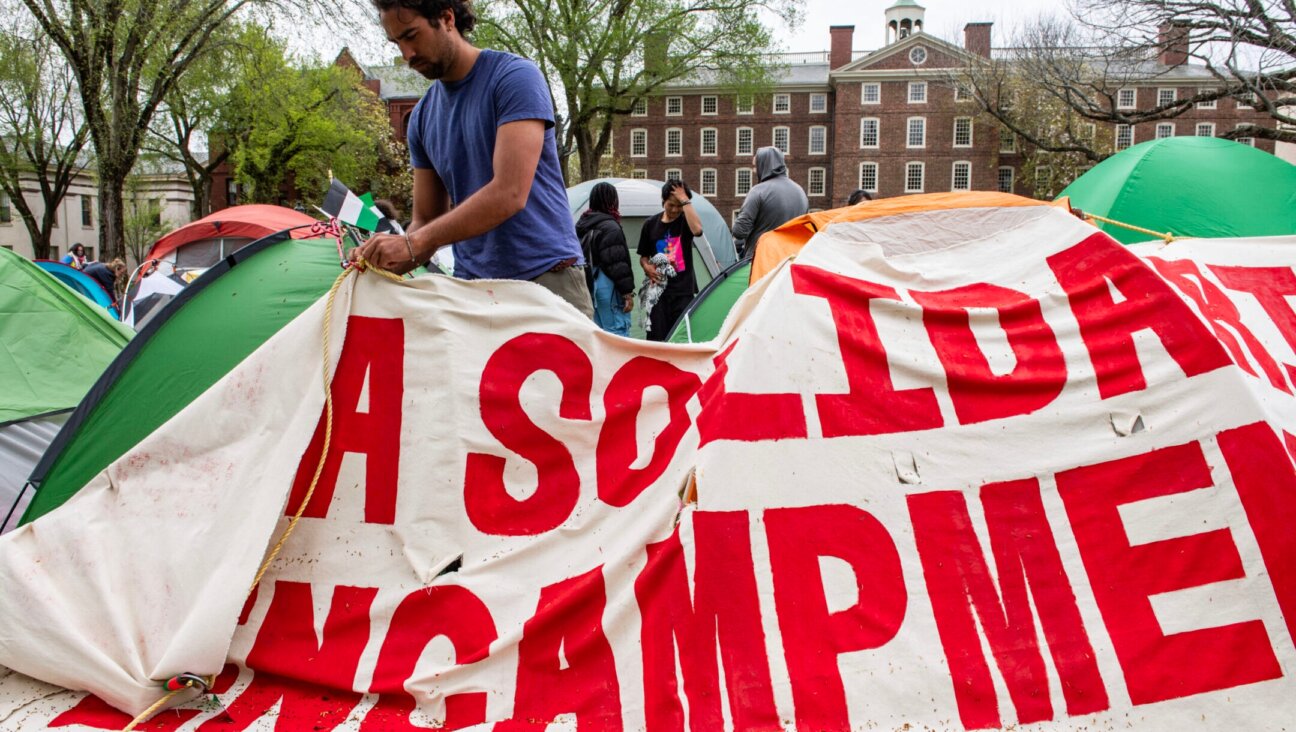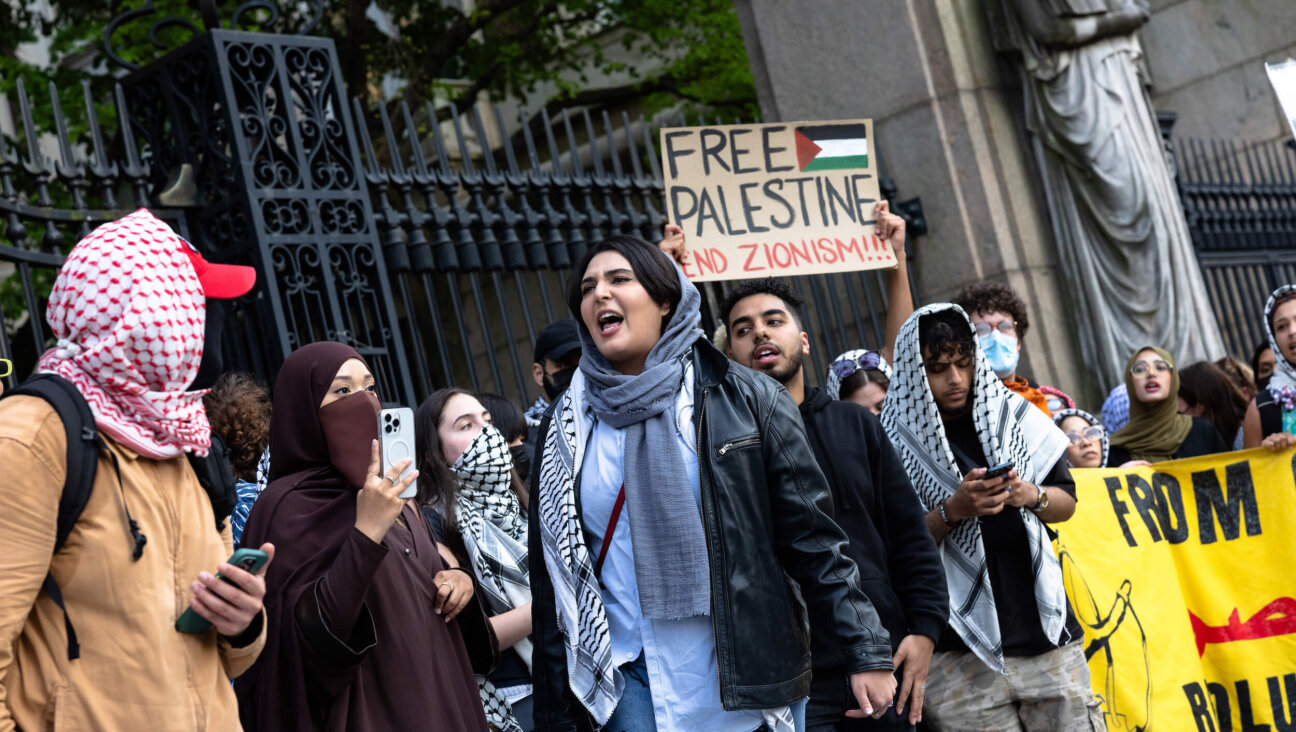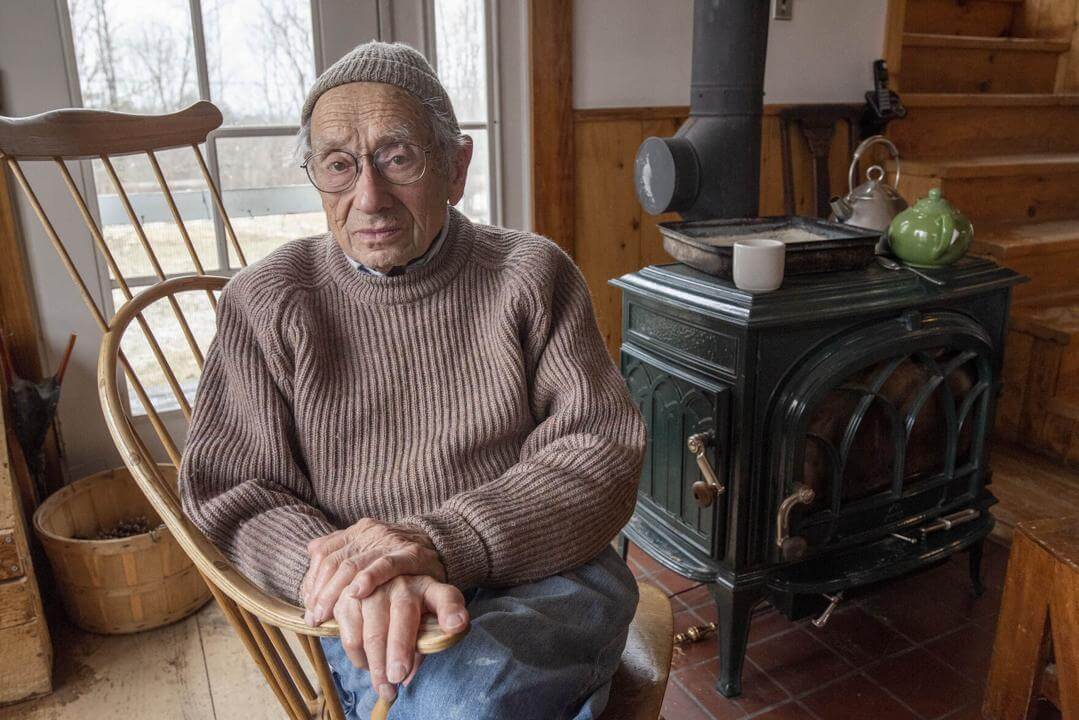Historic Union Torn Apart in Messy Divorce

The offices of union boss Bruce Raynor were, until recently, a physical testament to the Jewish labor movement’s enduring power.
Raynor, president of the historically Jewish garment unions, worked from an executive suite in Manhattan’s garment district, in a storied building that had been purchased with the dues of countless seamstresses and furriers and milliners working on the Lower East Side. While the Jewish members have largely disappeared from the rank and file of the union, Raynor himself is the child of a Long Island Jewish home and the garment district building is littered with reminders of the history.
In late May, though, Raynor was forced to beat a hasty retreat to much more modest offices farther downtown, in a building with low ceilings and drab carpeting and with temporary signs taped onto the walls.
“The fact that we had to leave the headquarters — I didn’t like it,” Raynor told the Forward while sitting in his new office. The walls around him were bare, except for a poster with a picture of Sidney Hillman, the Lithuanian-Jewish émigré who rose up to lead the Amalgamated Clothing Workers.
Raynor’s move was precipitated by an increasingly hostile union battle that has left the fate and assets of America’s most storied Jewish union in question; it also has complicated the future of America’s labor movement as a whole.
Raynor’s garment union, which was known as UNITE, merged in 2004 with the national hotel union, which was known as HERE, to form Unite Here. Raynor took over as president of the joint union, but the merger unraveled, and both sides are now attempting to keep control of the joint assets, including the old headquarters of the garment union and the largest union bank, Amalgamated Bank, which was founded by the old garment unions. Currently, Raynor retains chairmanship of the bank, but he moved out of his office as the controversy intensified.
“I was not going to participate in a B movie about unions,” Raynor said.
The messy divorce of Unite Here is having consequences far beyond the physical realm. It has been blamed for the stalled progress of a union-favored bill moving through Congress, the Employee Free Choice Act. The divorce also led Raynor to gather the remnants of the old garment unions into a new organization called Workers United, which is now a subsidiary of the Services Employees International Union. This move means that for the first time, the garment unions are not sovereign entities — a change that Raynor said was difficult to swallow.
“I love the garment unions — I love the history and I love who we are — and I would have loved to maintain that as a separate union,” Raynor said. “But having said that, the world does change — and for Unite to realize the principles that Sidney Hillman would have cared about, you have to be part of a bigger union in this society.”
It appeared for a time that Raynor also would lose his leadership position and end the long, unbroken line of Jewish men who have headed up the garment unions. When Workers United was created this spring, Edgar Romney, an African-American, was elected president. Many praised Romney’s election for bringing the union’s leadership more in line with its minority-heavy membership. But in the end, after Raynor resigned from Unite Here, Romney stepped aside so that Raynor could become president of Workers United. This has caused some soul searching in the labor movement about the presence of Jewish leaders in unions where there are few Jewish members. Raynor emphasized the ethnic diversity below him in the Workers United hierarchy. He said it was actually people like Romney who are keeping alive the distinct traditions of the Jewish immigrants who historically led these unions.
“These ‘Jewish unions’ were called that because they had a heavily Jewish membership and a heavily Jewish leadership — but it was the values that set them apart, looking out for immigrants,” Raynor said. “Today it’s still an immigrants’ union — it’s just different immigrants now.”
Raynor’s nemesis, John Wilhelm, the new president of Unite Here, is not so sanguine and said that Raynor’s moves — particularly his decision to join SEIU — have put in danger the living legacy of the garment unions.
“Look,” Wilhelm told the Forward, “SEIU is a union of nearly 2 million people; the former Unite is less than 100,000. It will very quickly get dissipated and absorbed into SEIU, and the institutional legacy will be gone — which is sad. This wouldn’t have happened if they had stayed a part of Unite Here.”
Raynor thinks it will go down differently. His new boss at the SEIU, Andy Stern, is the most prominent Jewish labor leader today, and Raynor portrayed Stern as a natural heir to the great Jewish labor leaders of the 1930s, like Hillman.
“I think Andy, who is also Jewish, shares the same values that I do,” Raynor said. “I really see SEIU in many ways as a modern version of the Jewish unions of the 1930s.”
The tradition of those old Jewish unions — bringing in immigrants and helping them step up to the middle class — seems to be the legacy that union activists watching the battle are most concerned about as the fights drag on.
“These were unions that specifically focused on an immigrant agenda,” said Amy Dean, a Jewish labor activist who got her start in the garment unions and is writing a book on the history of unions. “How sad that would be, if we lost that as a result of all the stuff that’s going on.”
The garment unions that Workers United is descended from were at the peak of their power in the 1930s and’40s. Back then, the men’s and ladies’ garment unions were notable not so much for their size as for the ways in which they were shaped by the socialist politics of the Jewish émigrés who led them. Hillman, of the men’s garment union, and David Dubinsky, of the needle trades union, wanted to provide more than just bargaining power, they wanted to give their members a better life and, as a result, they founded the banks and housing complexes and health centers that were the envy of union members elsewhere. Many are still headquartered in the building that Raynor was forced to leave.
Decades later, Raynor came to the union not from a poor immigrant background, but rather from Cornell University and the anti-war movement.
“Why did I choose to leave Cornell?” Raynor asked while eating a slice of pizza in his new offices, wearing a tie painted with baseballs. “In order to change society. That is the Jewish socialist tradition of our unions. It was appropriate that those same traditions led me to the same place, even though the workers were no longer Jewish.”
Raynor rose to fame by helping to organize workers at the Southern textile giant J.P. Stevens. He then moved up the ranks to become the latest in a chain of Jewish leaders to take the presidency of the Amalgamated Clothing and Textile Workers Union, which merged in 1995 with the International Ladies Garment Workers Unions to form Unite.
By 2003, when Raynor positioned his organization to merge once again, now with the hotel union, the membership in the garment unions had been in a long tailspin, thanks to the migration of the apparel industry out of the United States. The marriage with the hotel union was seen as a complementary match. While Raynor had a lot of assets but a shrinking membership, Wilhelm’s hotel union had a growing membership base but few assets with which to organize them. Both Raynor and Wilhelm — who rose out of a union organizing campaign at Yale University — came from the progressive side of the labor movement, which believed in immigrant rights and broader social change.
The two leaders said that they quickly developed philosophical disagreements over the best strategy for organizing workers. Raynor said that Wilhelm was not moving fast enough to organize workers, while Wilhelm maintained that Raynor was willing to sacrifice good contracts in order to get more members quickly.
One particular point of disagreement was the strike at the Congress Plaza Hotel in Chicago. That strike, which has now gone on for six years, pits an owner and philanthropist prominent in the Jewish community against workers supported by many socially minded rabbis in Chicago’s Jewish community. Within Unite Here, however, Wilhelm said that Raynor was pushing to cut off support for the striking workers.
“He wanted to walk away from those strikers, which is a concept that I don’t understand,” Wilhelm said.
Raynor said he thought the strike was a poor use of the union’s resources, given that the owners of the Congress did not own any other hotels.
“That company is atrocious, and the union should win, but the real problem is that in 10 years, we’ve only organized one hotel in the city of Chicago,” Raynor said. “They ought to be focused on that.”
The larger dispute broke out into the open late last year, in the months before a union election likely would have led to an ouster of Raynor as president of the joint union. Before that could happen, Raynor led many local unions in voting to secede from Unite Here. Since then, the two sides have exchanged verbal and legal volleys. Both sides have laid a claim to the bank and the headquarters — claims that are making their way through court right now.
One of the primary sticking points in the divorce has been Raynor’s contention that his new organization should be able to begin organizing hotel workers in some cities; this follows from the decision of some current hotel worker members to join the new Workers United. Wilhelm said he is not willing to consider a future in which another union would be competing for hotel worker members. He pinned responsibility for the problem not on Raynor but rather on Stern, and on what Wilhelm described as Stern’s “imperialistic” intention to take over smaller unions.
Raynor defended his new boss and said that Stern has faced opposition because he has looked beyond the labor movement to effect change.
“One of Andy’s passions is political action and using the political arena to take care of workers’ problems,” Raynor said. “He probably spends a majority of his time on national health care. That’s a social issue. It’s not going to get more members into SEIU, it’s going to provide health care for the 50 million people that don’t have it.”
Wilhelm and Raynor are unable to agree on who is to blame for the current mess — and they have missed few opportunities to castigate each other. Still, both men continue to share similarly progressive visions of what their organizations are all about. Wilhelm said: “I grew up as a progressive trade unionist, one of the places you looked to for inspiration was the needle trades unions. I still have tremendous respect for that.”
But both leaders also agree that the battle between them has put the pursuit of those old values into jeopardy.
“This is very destructive,” Raynor said. “It’s destructive to the workers in our union — and to non-union workers. It’s destructive to the labor movement; it makes the labor movement more divided and harder to unite around issues. So this fight needs to end.”
Contact Nathaniel Popper at [email protected]

I hope you appreciated this article. Before you go, I’d like to ask you to please support the Forward’s award-winning, nonprofit journalism during this critical time.
Now more than ever, American Jews need independent news they can trust, with reporting driven by truth, not ideology. We serve you, not any ideological agenda.
At a time when other newsrooms are closing or cutting back, the Forward has removed its paywall and invested additional resources to report on the ground from Israel and around the U.S. on the impact of the war, rising antisemitism and the protests on college campuses.
Readers like you make it all possible. Support our work by becoming a Forward Member and connect with our journalism and your community.
Make a gift of any size and become a Forward member today. You’ll support our mission to tell the American Jewish story fully and fairly.
— Rachel Fishman Feddersen, Publisher and CEO
Join our mission to tell the Jewish story fully and fairly.
























